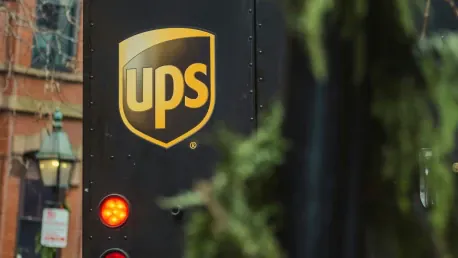In a bold move aimed at enhancing operational efficiency, UPS has embarked on a significant initiative to reduce its daily volume capacity by approximately 1 million packages. This strategy comes as part of their “Network of the Future” plan, a comprehensive approach designed to streamline and modernize the company’s logistics network. As part of this initiative, UPS has closed 45 operational sites, including the complete shutdown of nine buildings. The results of these efforts have been remarkable, with an 8% improvement in parcels processed per workforce hour, which translates into an impressive gain of 11 million hours of efficiency.
Despite experiencing a prior slump in demand that resulted in a substantial capacity glut, UPS reported a 6.5% year-over-year increase in average daily U.S. volume in Q3, marking its highest growth rate in three years. To manage this resurgence in volume more effectively, UPS has increasingly turned to automation. The company now processes 63% of its hub volume automatically, marking a 5 percentage point increase from the previous year. Looking ahead, UPS plans to close around 200 facilities while tripling the number of automated buildings, a move intended to save on costs and further boost efficiency. This ambitious drive towards automation and consolidation represents a significant shift in UPS’s operations, positioning it for enhanced flexibility and responsiveness in a rapidly evolving market.
Industry-Wide Trends in Network Optimization
In an effort to boost operational efficiency, UPS has launched an initiative to cut its daily package volume by about 1 million. This move is part of their comprehensive “Network of the Future” plan aimed at modernizing and streamlining their logistics operations. To achieve this, UPS has closed 45 operational sites, including the complete shutdown of nine buildings. These measures have led to an 8% increase in parcels processed per workforce hour, resulting in a remarkable gain of 11 million hours of efficiency.
Despite a previous drop in demand that left them with surplus capacity, UPS saw a 6.5% year-over-year rise in average daily U.S. volume in Q3, the highest growth rate in three years. To better handle this surge, UPS has ramped up automation, now automatically processing 63% of its hub volume, a 5 percentage point increase from last year. Looking forward, UPS intends to close around 200 more facilities while tripling its number of automated centers. This strategy is designed to save costs and further enhance efficiency, positioning the company for greater flexibility and responsiveness in a fast-changing market.









